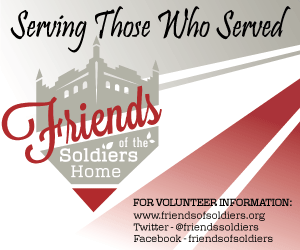How to take an active role in your child's school safety
/(photo: Alex Starr)
On October 17th, at 12:21pm, one mile from my children’s elementary school in Petworth, MPD reported an active shooter on the Howard University Campus. At 1:38pm, an email went out from my children’s school to the parent community (in both English and Spanish) letting us know that the school was in lockdown. At 2:05pm, MPD reported that there was, in fact, no shooter. At 2:15pm, parents received a message from the school that the lockdown had been lifted.
For 30 minutes, my life stood still, and my head started swimming with worst-case scenarios, preparing for the unimaginable, and the terrible reality that an increasing number of parents across the United States have to live with every day. For us, the school was communicative, and the children were safe.
Since the tragedy of Sandy Hook, parents like me are finding themselves in a whole new world of anxiety. Dropping children off at school is not a guarantee of their safety, and it can make families feel helpless during the hours that their children spend at school. Like many parents, I have been trying to do my part through political activism, joining causes, and donating. These big picture issues are extremely important. However, they don’t make me feel more informed or equipped to deal with the possibility of an event in my own child’s school.
“Parents are the least educated constituency when it comes to school safety,” says Chris Lalik, a consultant with the Student Support Center, who works with DC charter schools on safety. I sat down with Chris to discuss safety in DC schools and what parents can do to be more informed and better advocates for their children.
For parents looking for more information, Chris had a series of resources to share and recommendations for playing a more active role in your children’s safety:
1. Take advantage of all the online resources that exist and educate yourself on the procedures and policies.
Chris recommends starting by visiting the district’s Emergency and Safety Alliance website which offers a page for parents. This includes a copy of the School Emergency Response Plan & Management Guide in multiple languages. The guide covers areas like preparedness, emergency response procedures and prevention, to name a few. Also included on the page, is a Be Ready form that you can fill out with your children, creating a family emergency plan.
2. Have information readily accessible.
Print out the “Safeguarding Your Children” Parent Brochure and keep it somewhere you can easily access it when needed. It provides emergency telephone numbers for the district and news outlets to monitor in case of a school-related event.
3. Get acquainted with the terminology that schools use in emergency situations.
When an event occurs, and parents receive emails or texts, it can be overwhelming and scary to hear words like “lockdown” or “evacuation.” These terms are part of the Universal Emergency Response protocol, and understanding each what each term means, can help mitigate anxiety for
- Evacuation – This is the most common and usually the first course of action in any emergency situation or security breach. This is used when the outside area is deemed safer than the inside and the goal is to physically remove students from a possible threat. Usually an alarm is sounded and students are led to a location that has been previously determined by the school’s safety handbook.
- Alert Status – This is used when the school is trying to limit access to individuals who are outside the building. Windows and doors are locked, staff is sent to monitor anyone coming in or out of the building, and students are informed that they cannot enter and exit the building on their own.
- Lockdown – A lockdown can be used to keep students safe from a threat outside or inside the building. Students clear all common areas and find the nearest available classroom. Teachers/staff use signals in the window to show “all clear” or “help needed.”
- Shelter in Place – this form of lockdown takes the extra step of taping up windows and doors and sealing gaps to address any chemical or gas concerns.
- Severe Weather Safe Area – this protocol can be used for a variety of emergencies. In this case, students make their way quickly to designated safe areas, leaving all belongings, and staying put until the “all clear” is sounded.
- Drop, Cover, and Hold – this protocol is used for earthquakes or in the case that there is severe damage expected to the building itself. Students and staff DROP to the floor, COVER their eyes and HOLD onto a piece of furniture for stability, waiting for the “all clear.”
Playgrounds should be safe spaces. (photo: Tamar Lechter)
4. Ask questions of your school.
Parents have the right to understand how the school is keeping their children safe. Understand that not all information can be shared, to ensure the safety of the students. For example, parents should not expect to have copies of school floor plans, emergency routes or codes. However, parents should know where to go in the case of an emergency to collect their children. Knowing ahead of time, can reduce anxiety and chaos at the time of the event.
- Ask your school about drills and how you can support your child by practicing at home. Schools are required by DC law to hold 2 emergency evacuation drills per year, but in a WTOP story in 2016, they found that 5 percent of schools held the required number of emergency evacuation drills. Ask your school how many drills they hold. Practice playing “the quiet game” with your child to see if they can adhere to that type of drill. If they have problems staying quiet for a fixed amount of time, you can work with them on that skill.
- Don’t wait for a national incident to start asking questions. Parents tend to panic right after an event like the most recent shooting at Marjory Stoneman Douglas High, when they should be asking these questions on an on-going basis. Get in the habit of checking in with your school administrators annually to see what has changed and what you need to know.
- Don’t expect too much information too quickly. There are privacy laws that don’t let schools share names of students. Expect basic communication and information from the school. The rule of thumb is that if you have not been contacted about your child, chances are that your child is OK.
5. Understand your community and neighborhood.
MPD keeps a Neighborhood Crime Evaluation for schools, tracking up to 1,500 feet of any school in the district. You can keep track of what types of crimes are occurring near your child’s school and be involved in advocating for security measures to address them. In a neighborhood like Petworth, there is an advantage to being in an urban setting – the police response time is very quick. According to Chris, “MPD is very responsive to DC school’s needs in general.”
DC has not experienced a school shooting since 1996, when 14-year-old Damion Blocker was shot in a stairwell at Winston Education Center. (I’m omitting the 2004 shooting at Ballou High School, because the shooting was not on school property.) DC has a lot of great safety precautions in place, like metal detectors in all public High Schools, and a very responsive police department. However, parents need to stay alert and involved in creative safe learning environments.
“Don’t be complacent,” says Chris.
Hopefully with these tips and resources, we won’t be.




















